Thursday, February 28, 2013
Wednesday, September 21, 2011
Igloo Hotel in Kakslauttanen, Finland
The Hotel Kakslauttanen in Finland is in fact an Igloo Village, at which you can have your pick of 20 unique glass and snow igloos for your stay. They aren’t ice houses, but 31 well-maintained log cabins – built from a very special thermo glass that keeps them warmth and comfortable. Because of that, the temperature inside the Igloos is always a normal room temperature and the igloos inhabitants won’t feel any of the polar cold.

The Igloo Village Kakslauttanen boasts a World’s Largest Snow Restaurant. You can enjoy a drink at the Ice Bar, or visit the Ice Gallery for local art, or try the world’s largest smoke sauna if you get a chance, or throw the most memorable wedding or christening at the Ice Chapel.






The surrounding Finnish Lapland scenery is incredible – it’s a prime spot for marveling at the northern lights throughout the winter. When sleeping in the glass igloos you are able to for viewing the amazing natural phenomena – Aurora Borealis and the millions of stars in the sky. The experience is also unforgettable when there is a snowstorm


Thursday, August 18, 2011
2011 International Photography Award Winners
The International Photography Awards is an annual competition that was created to salute the achievements of the world’s finest photographers, to discover new and emerging talent, and to promote the appreciation of photography.
Recently, the category winners were announced. Out of the thousands of entries IPA received this year, only the main category winners will move on as finalists to compete for IPA's top award of International Photographer of the Year. The winner will be announced at the annual Lucie Awards which is held at the Lincoln Center, New York on October 24th, 2011. That person will earn the coveted Lucie Statue and a cash prize of $10,000.
Advertising: Fashion, 2nd Place Winner John Wright

Advertising: Fashion, 1st Place Winner Peter Lipmann

Advertising: Music, 2nd Place Winner Poras Chaudhary

Advertising: Other Ad, 1st Place Winner Adam Taylor

Advertising: Product, 3rd Place Winner Adam Balcerek

Architecture: Other, 2nd Place Winner Kacper Kowalski

Book: Nature, 1st Place Winner Thorsten Milse

Book: Nature, 2nd Place Winner Alex Bernasconi

Editorial: Photo Essay and Feature Story, 2nd Place Winner Zhe Chen

Editorial: War/Conflict, 3rd Place Winner Jorge Dirkx

Fine Art: Collage, 2nd Place Winner Dean West

Fine Art: Other, 3rd Place Winner Alex Bernasconi

Nature: First Category Winner Marsel van Oosten

Nature: Flowers, !st Place Winner Tom D. Jones

Nature, Landscapes, 1st Place Winner Mitch Dobrowner

Nature, Landscapes, 2nd Place Winner Peter Lik

Nature, Seasons, 2nd Place Winner John Scanlan

Nature, Sunset, 1st Place Winner Rafael Rojas

Nature, Sunset, 3rd Place Winner Bali & Albanese

Nature, Trees, 2nd Place Winner Alex Bernasoni

Nature, Underwater, 1st Place Winner Bartosz Strozynksi

Nature, Underwater, 2nd Place Winner Chuck Bradley

Special, Moving Images, 1st Place Winner Tyler Stableford

Special, Night Photography, 1st Place Winner David Bowman

Special, Pets, 1st Place Winner Lennette Newell

Source: mymodernmet
Posted by Fresh Pics at 8:50 PM
Labels: Cool Pics, Photography
Wednesday, July 20, 2011
Afghanistan in the 1950's and 1960's
This is Afganistan of 50s and 60s. Lots of people would think that they will see pictures of wild, underdeveloped and medieval country with lif econditions worse than now. Oh well, think again.
Mohammad Qayoumi, president of California State University, East Bay, writes in Foreign Policy:
On a recent trip to Afghanistan, British Defense Secretary Liam Fox drew fire for calling it "a broken 13th-century country." The most common objection was not that he was wrong, but that he was overly blunt. He's hardly the first Westerner to label Afghanistan as medieval. Former Blackwater CEO Erik Prince recently described the country as inhabited by "barbarians" with "a 1200 A.D. mentality." Many assume that's all Afghanistan has ever been -- an ungovernable land where chaos is carved into the hills. Given the images people see on TV and the headlines written about Afghanistan over the past three decades of war, many conclude the country never made it out of the Middle Ages.
But that is not the Afghanistan I remember. A half-century ago, Afghan women pursued careers in medicine; men and women mingled casually at movie theaters and university campuses in Kabul; factories in the suburbs churned out textiles and other goods. There was a tradition of law and order, and a government capable of undertaking large national infrastructure projects, like building hydropower stations and roads, albeit with outside help. Ordinary people had a sense of hope, a belief that education could open opportunities for all, a conviction that a bright future lay ahead. All that has been destroyed by three decades of war, but it was real.
1. The physical campus of Kabul University, pictured here, does not look very different today. But the people do. In the 1950s and '60s, students wore Western-style clothing; young men and women interacted relatively freely. (MOHAMMAD QAYOUMI)

2. Today, women cover their heads and much of their bodies, even in Kabul. A half-century later, men and women inhabit much more separate worlds. (MOHAMMAD QAYOUMI)
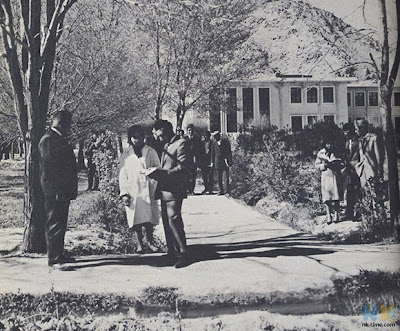
3. In the 1950s and '60s, women were able to pursue professional careers in fields such as medicine. Today, schools that educate women are a target for violence, even more so than five or six years ago. (MOHAMMAD QAYOUMI)

4. When I was growing up, education was valued and viewed as the great equalizer. If you went to school and achieved good grades, you'd have the chance to enter college, maybe study abroad, be part of the middle class, and enjoy a comfortable lifestyle. Education was a hallowed value. Today, I think people have become far more cynical. They do not see the link between education and a better life; they see instead that those who have accumulated wealth and power have not done so through legitimate means. (MOHAMMAD QAYOUMI)

5. This infant ward in a Kabul hospital in the 1960s contrasts sharply with one I visited in 2004 in Mazar-e-Sharif. There I found two babies born prematurely sharing the same incubator. That hospital, like many in Afghanistan today, did not have enough equipment. (MOHAMMAD QAYOUMI)

6.In the 1960s, about half of Afghanistan's people had access to some level of medical care; now a much smaller percentage do. Today's hospitals are crowded, the facilities limited; nearly one in four babies born in Afghanistan today does not reach its fifth birthday. (MOHAMMAD QAYOUMI)
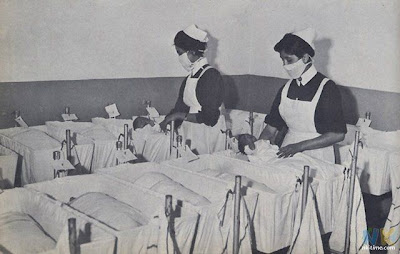
7. Above is a vaccine research center attached to a Kabul hospital in the 1960s. Today, medical care across the country is limited by several factors, including lack of electricity. Less than 20 percent of Afghans have access to electricity; many homes are lit by kerosene lamps, with only fans running to combat the heat. (MOHAMMAD QAYOUMI)

8. The central government of Afghanistan once oversaw various rural development programs, including one, pictured here, that sent nurses in jeeps to remote villages to inoculate residents from such diseases as cholera. Now, security concerns alone make such an effort nearly impossible. Government nurses, as well as U.N. and NGO medical workers, are regular targets for insurgent groups that merely want to create disorder and terror in society. (MOHAMMAD QAYOUMI)

9.Afghanistan once had Boy Scouts and Girl Scouts. In the 1950s and '60s, such programs were very similar to their counterparts in the United States, with students in elementary and middle schools learning about nature trails, camping, and public safety. But scouting troops disappeared entirely after the Soviet invasions in the late 1970s. (MOHAMMAD QAYOUMI)

10. This movie theater was located near where I once lived, and we could even see Hollywood movies there. (MOHAMMAD QAYOUMI)

11. A playground a few hundred yards away from the theater, where mothers used to take their children to play. Now, only men loiter in the city parks; it is unsafe to bring children outside. (MOHAMMAD QAYOUMI)

12. Light and medium industry, like this metal shop in the Kabul suburbs, once held great promise for Afghanistan's economy. But today, how could you run such an operation without ample electricity? Now there are only small shops, people who work at home -- no major industrial centers. Currently, Afghanistan's chief export is opium. (MOHAMMAD QAYOUMI)

13. With German assistance, Afghanistan built its first large hydropower station, pictured here, in the early 1950s. At the time, it was state of the art. It is still in operation, but unfortunately, in the last eight years, Afghanistan's government has not been able to build a single large power plant of any kind. The only sizable accomplishment has been the expansion of a transport line to Uzbekistan so that power can be imported from the north. (MOHAMMAD QAYOUMI)

14. Afghanistan did have medium and light industry, such as the textile factory pictured here. There was a sense then that Afghanistan had a bright future -- its economy was growing, its industry on par with other countries in the region. Back then, most of the cotton processed in a plant like this was grown locally. But three decades of war have destroyed industry and the supply chain. (MOHAMMAD QAYOUMI)
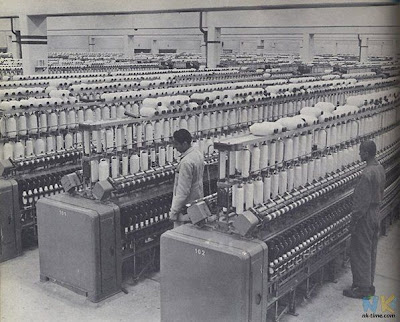
15. Compared with the 1950s and '60s, fewer women work outside the home, and their outfits are much more conservative than what you see here. (MOHAMMAD QAYOUMI)
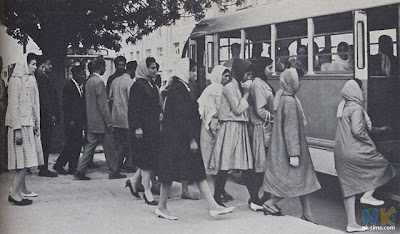
16. If you flipped through the radio dial in the 1960s, you would hear broadcasts of world news, local news, music programs, funny skits, political discourse, maybe an art program, a children's show. Radio Kabul, a state-run station whose old offices are pictured here, was launched in the 1930s. (MOHAMMAD QAYOUMI)

17. Modern Afghanistan actually has a greater number of private radio stations, as well as broadcast and satellite television shows. This is one bright spot. But access to radio and TV depends on electricity, and so in a practical sense, the audience is therefore limited. Only the most well-to-do families have private generators to ensure uninterrupted electricity to power electrical devices. (MOHAMMAD QAYOUMI)
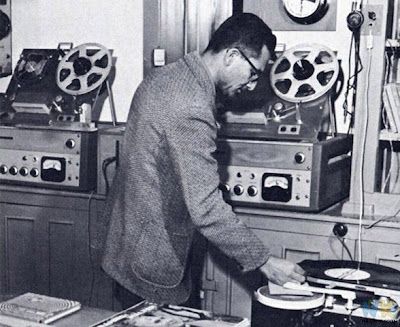
18. During the annual commemoration of Afghanistan's independence, Kabul was lit up at night in late August and early September for nine evenings in the early 1960s. Now the city is dark. Even driving at night gives an eerie feeling. There are hardly any lights on; the streets are desolate, and there is no night life. (MOHAMMAD QAYOUMI)

19. Clothing boutiques like these were a familiar feature in Kabul. (MOHAMMAD QAYOUMI)

20. So, too, were record stores, bringing the rhythm and energy of the Western world to Kabul teenagers. (MOHAMMAD QAYOUMI)

21. Today, furniture stores like this one are a rarity. Most furniture is manufactured outside Afghanistan, and only a small percentage of Afghans now have even simple furniture like this in their homes. (MOHAMMAD QAYOUMI)

22. Today it is only the fruit bazaars that still look the same. (MOHAMMAD QAYOUMI)

23. The education level of Afghanistan's cabinet today is far less than it was 50 years ago, when this photo was taken. Back then, most high-ranking government officials would have had master's or doctoral degrees. Western dress was the norm. These days, government meetings in Kabul are conducted among men, many with long beards, big turbans, and traditional garb. (MOHAMMAD QAYOUMI)

24. Afghanistan's once strong and functional defensive forces are today only a memory. After the Soviets left, Pakistan was instrumental in destroying the country's armed services. Since the 1990s civil war, the subsequent Taliban takeover, and the U.S.-led intervention, domestic security forces have proved extremely difficult to build, even as security remains a top concern. (MOHAMMAD QAYOUMI)

Source: foreignpolicy
Posted by Fresh Pics at 8:06 PM
Labels: Community and Lifestyle, Cool Pics, History, Travel















